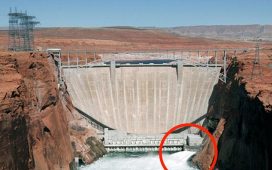A meat-eating dinosaur with a feathered body, iron grip and a tail for agile pursuit of prey, has been discovered by fossil hunters, revealing that raptor dinosaurs were thriving right up to the point the asteroid struck, 66m years ago.
The remains, comprising about 20 bones, were found in the San Juan Basin in New Mexico, in rocks dating to about 67m years ago. They are believed to be from a type of dromaeosaurid – a family of theropod dinosaurs that includes raptors – which appears to have been a close cousin of the velociraptor.
Dubbed Dineobellator notohesperus – a nod to the indigenous people of the region, the Navajo, the latin word for warrior and the south-western US location it was found in – the animal would have been about two metres in length, weighed about 18-22kg, and been covered in feathers.
Researchers say the fossils show a number of unusual features. “The upper arm bone has a very distinct angle in it, and basically what that means is that muscles attaching there would have been more efficient than other [dromaeosaurids],” said Dr Steven Jasinski, of the University of Pennsylvania and a co-author of the research.
“[That] would have allowed muscles of a similar size to be stronger and do more work more quickly in this animal.”
The animal’s claws also showed large projections on their bottom side, where muscles and tendons would have attached. “They are especially large, which would have given this animal a really strong grip and ability to grasp things with both its hands and feet,” said Jasinski.
And while many dromaeosaurids had stiff, reinforced tails that acted as a counterbalance, helping the animals run fast while low to the ground, the newly discovered beast had an extra feature: mobility.
“The one major thing that is different about Dineobellator is that at the base of the tail, the vertebrae are set up differently so it makes the tail highly mobile at the base,” said Jasinski. That, he added, means the dinosaur would have been able to whip its stiff tail around while pursing zig-zagging prey, meaning it was not only a nippy predator, but agile to boot.
While the final moments of Dineobellator are lost to time, the team found a gouge in one of the animal’s claws that appears to have been made around the time of its death – suggesting the beast may have met a sticky end. “We speculate an altercation with another Dineobellator or other predatory theropod resulted in these marks,” they write.
Jasinksi noted that while dromaeosaurids were present in both Asia and North America about 125m years ago, there are few fossils from the period that followed, with more recent remains discovered primarily in Asia.
“It looks like the ancestors of Dineobellator would have basically migrated from Asia and then diversified once they got back to North America at the very end of the Cretaceous, right before they went extinct,” said Jasinski.
Jasinski said the findings emphasised there was still considerable diversity before the mass extinction, despite some arguing that dinosaurs were in decline. “It shows dromeosaurids were still basically evolving, they were still trying out new evolutionary pathways, new features, up to the very end,” he said.
Dr Stephen Brusatte, a palaeontologist at the University of Edinburgh who was not involved in the research, agreed, adding that Dineobellator is the best fossil raptor dinosaur from southern North America during the very end of the age of dinosaurs, and one of the last surviving raptors.
“In fact, it seems like there were many types of raptors in North America at this time, so they were really prospering,” he said.
The creature would have been fearsome, he added. “If you saw it alive, Dineobellator would have looked like a weird, long-tailed, toothy bird – but one that could chase you down on foot and gut you with its claws.”














